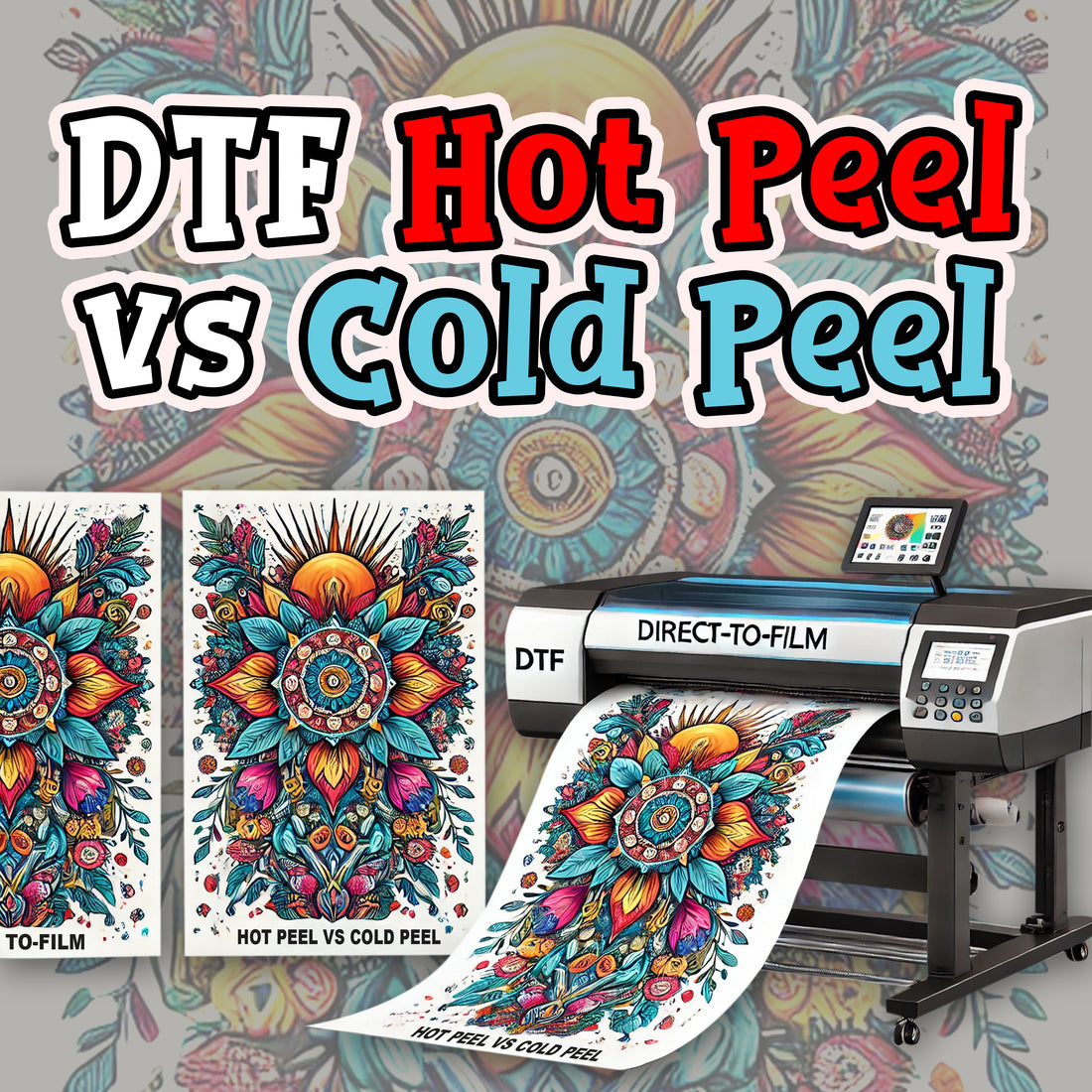
DTF Hot Peel vs Cold Peel DTF Film
Share
When it comes to Direct to Film (DTF) printing, understanding the difference between hot peel and cold peel DTF film is crucial for achieving the desired results. Both types of films have their own unique properties and advantages. Here’s a comparison to help you decide which one is best suited for your needs:
Hot Peel DTF Film
1. Application Process:
- Peel While Hot: With hot peel DTF film, you need to peel off the film immediately after pressing, while it is still hot. This requires careful handling to avoid burning yourself and ensuring the design adheres correctly.
2. Time-Saving:
- Quick Process: The hot peel method can save time as there is no need to wait for the film to cool down before peeling. This is advantageous for high-volume production runs where efficiency is key.
3. Finish and Feel:
- Smooth Finish: Hot peel DTF films typically result in a smooth, matte finish on the garment. The print feels soft to the touch, which is desirable for many types of apparel.
4. Adhesion:
- Strong Adhesion: The immediate peeling process can help ensure strong adhesion of the design to the fabric, making it durable and resistant to washing and wear.
5. Learning Curve:
- Requires Practice: Hot peel DTF films require practice to master the peeling technique and timing. Incorrect peeling can lead to incomplete transfers or damage to the design.
Cold Peel DTF Film
1. Application Process:
- Peel When Cold: With cold peel DTF film, you must wait for the film to cool completely before peeling it off. This makes the process more forgiving and reduces the risk of burns.
2. Ease of Use:
- User-Friendly: The cold peel method is generally easier for beginners or those new to DTF printing. The risk of damaging the print during peeling is lower compared to hot peel.
3. Finish and Feel:
- Matte or Glossy Finish: Cold peel DTF films can offer either a matte or glossy finish, depending on the specific film used. The print feels slightly different, often having a slightly thicker feel than hot peel prints.
4. Adhesion:
- Consistent Results: The waiting period allows the adhesive to set properly, often resulting in more consistent and reliable adhesion, which is beneficial for various fabric types.
5. Production Speed:
- Longer Process: The need to wait for the film to cool can slow down the production process, making it less ideal for high-volume, quick-turnaround projects.
Choosing the Right Film
The choice between hot peel and cold peel DTF film depends on your specific needs and preferences:
- Hot Peel: Choose this if you need faster production times and are experienced with handling hot peel techniques. It’s ideal for high-volume runs where efficiency is crucial.
- Cold Peel: Opt for this if you prioritize ease of use and consistent results, especially if you’re new to DTF printing or working with delicate designs.
Both hot peel and cold peel DTF films have their own advantages, and the best choice will depend on your particular requirements and comfort level with the peeling process.
